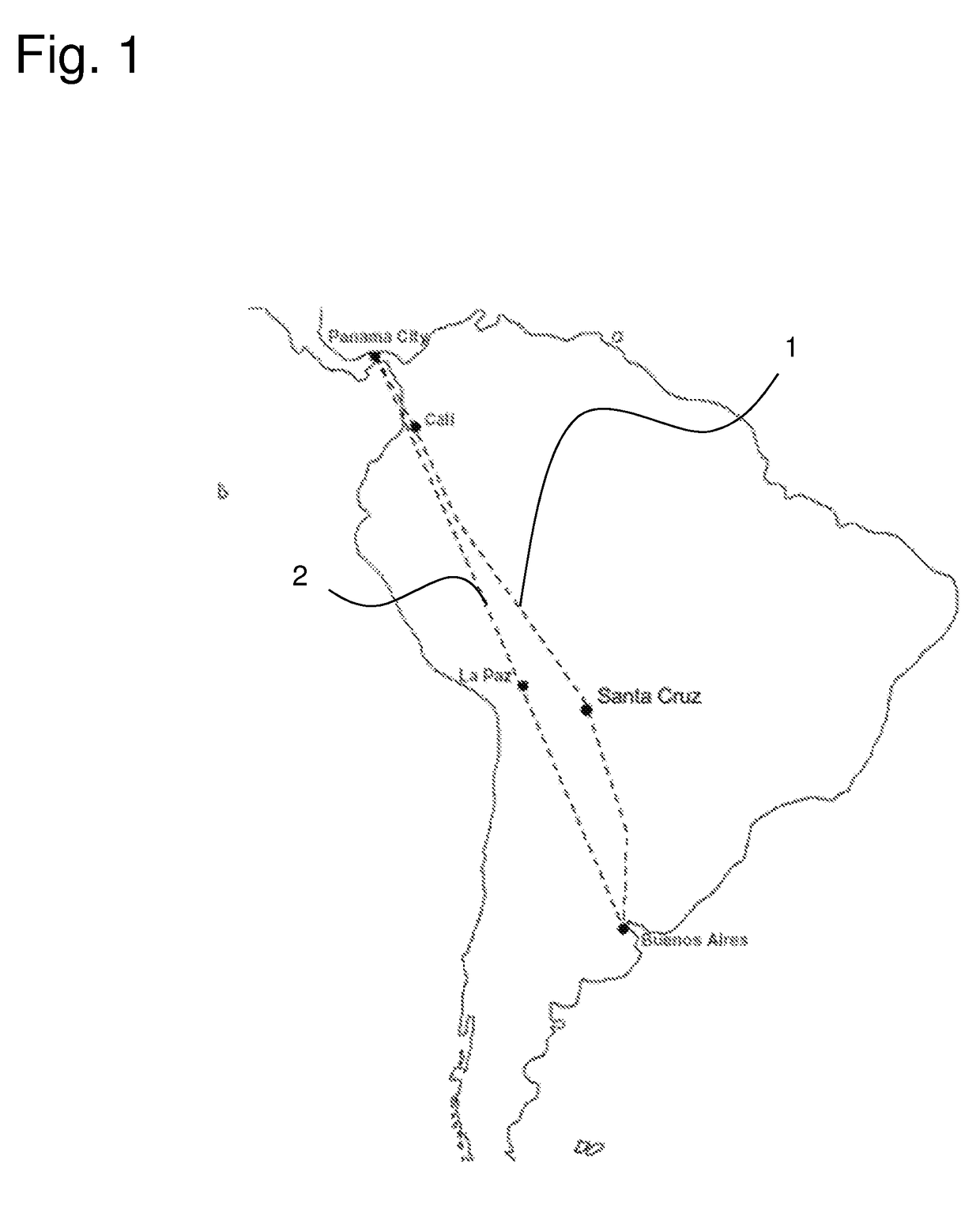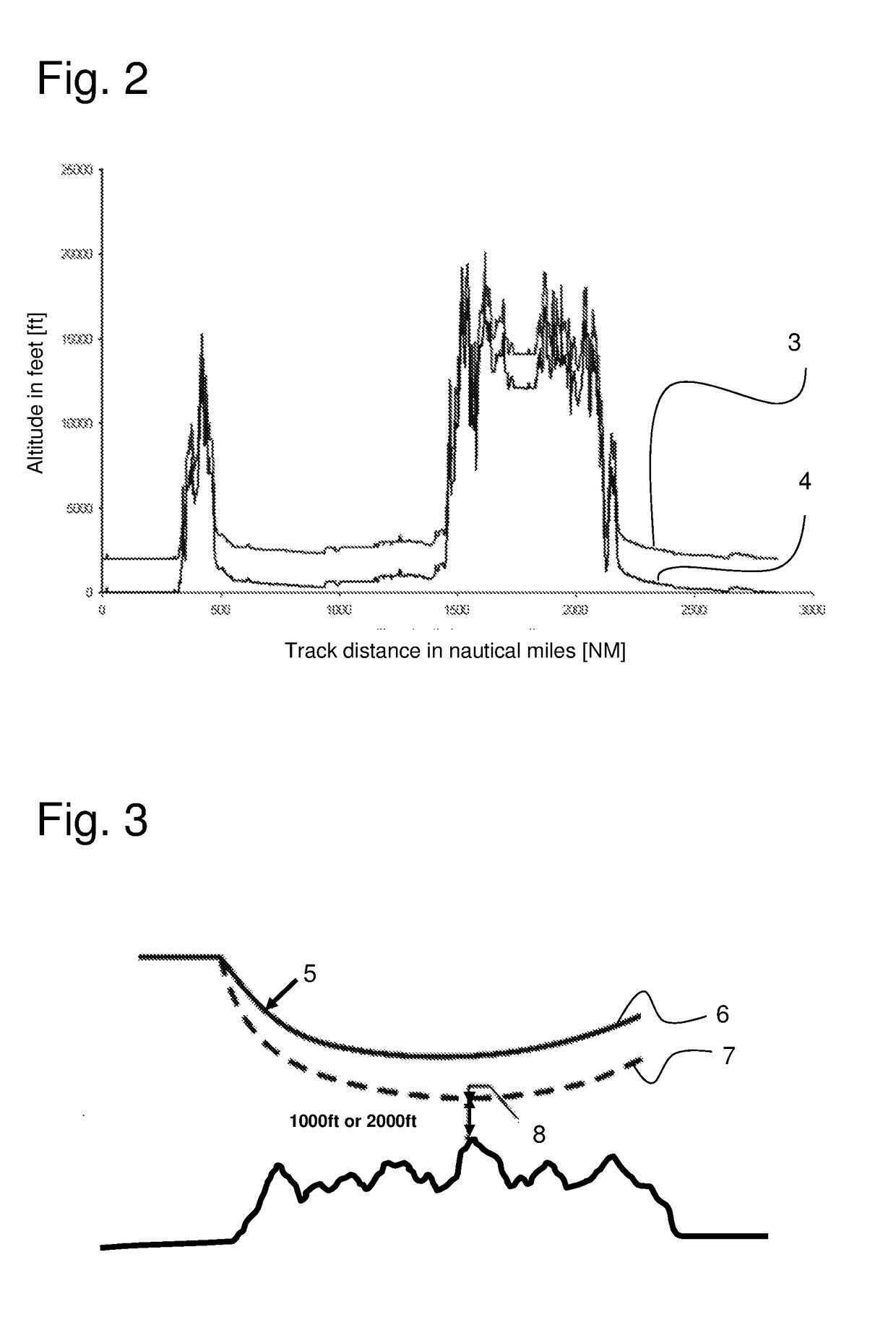Gas mixture and use thereof for people to breathe as required in the event of pressure drops in aircraft or in the event of hyperventilation, and method therefor
- Summary
- Abstract
- Description
- Claims
- Application Information
AI Technical Summary
Benefits of technology
Problems solved by technology
Method used
Image
Examples
Embodiment Construction
[0026]FIG. 1 shows the implications of the constraints imposed on route planning due to the problem of ensuring adequate oxygen supply. This is illustrated by means of a flight route between Panama City and Buenos Aires. In the case of direct route, after about halfway the flight path passes over the Bolivian and subsequently the Argentinian Andes. Accordingly, this extensive and extremely high mountainous area constitutes a restriction on emergency descent options, because in the event of cabin depressurization over the extensive high plateau, the aircraft is unable to descend to a safe altitude where air passengers can breathe autonomously within the required time limit. For this reason, a substantially longer detour route 1 via Santa Cruz needs to be taken mostly over lowland, avoiding the critical Andes mountains. The economical and efficient variant of a direct route 2 therefore must not be used. The altitude profile associated with a direct route 2 between Panama City and Buen...
PUM
 Login to View More
Login to View More Abstract
Description
Claims
Application Information
 Login to View More
Login to View More - R&D
- Intellectual Property
- Life Sciences
- Materials
- Tech Scout
- Unparalleled Data Quality
- Higher Quality Content
- 60% Fewer Hallucinations
Browse by: Latest US Patents, China's latest patents, Technical Efficacy Thesaurus, Application Domain, Technology Topic, Popular Technical Reports.
© 2025 PatSnap. All rights reserved.Legal|Privacy policy|Modern Slavery Act Transparency Statement|Sitemap|About US| Contact US: help@patsnap.com



